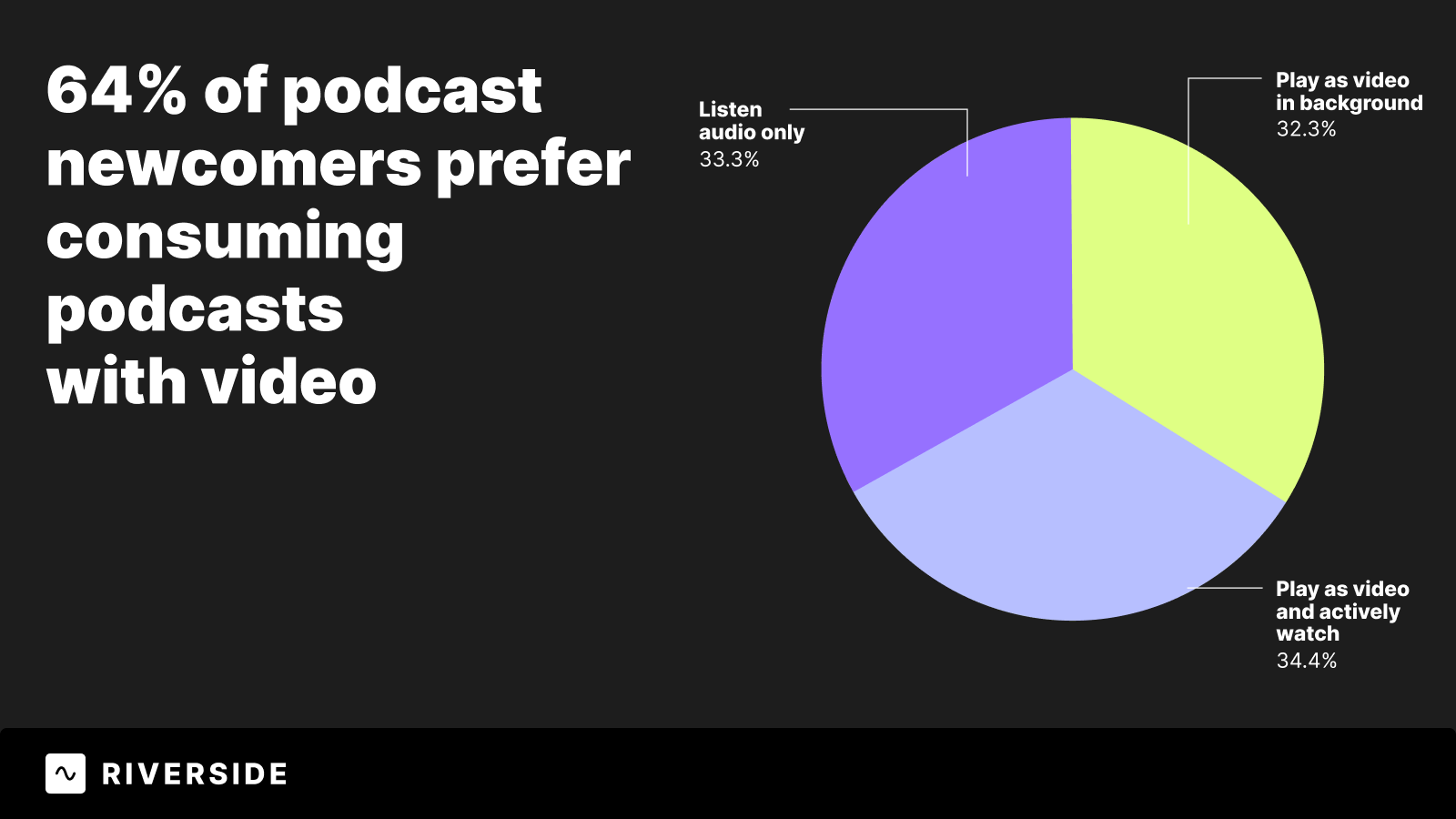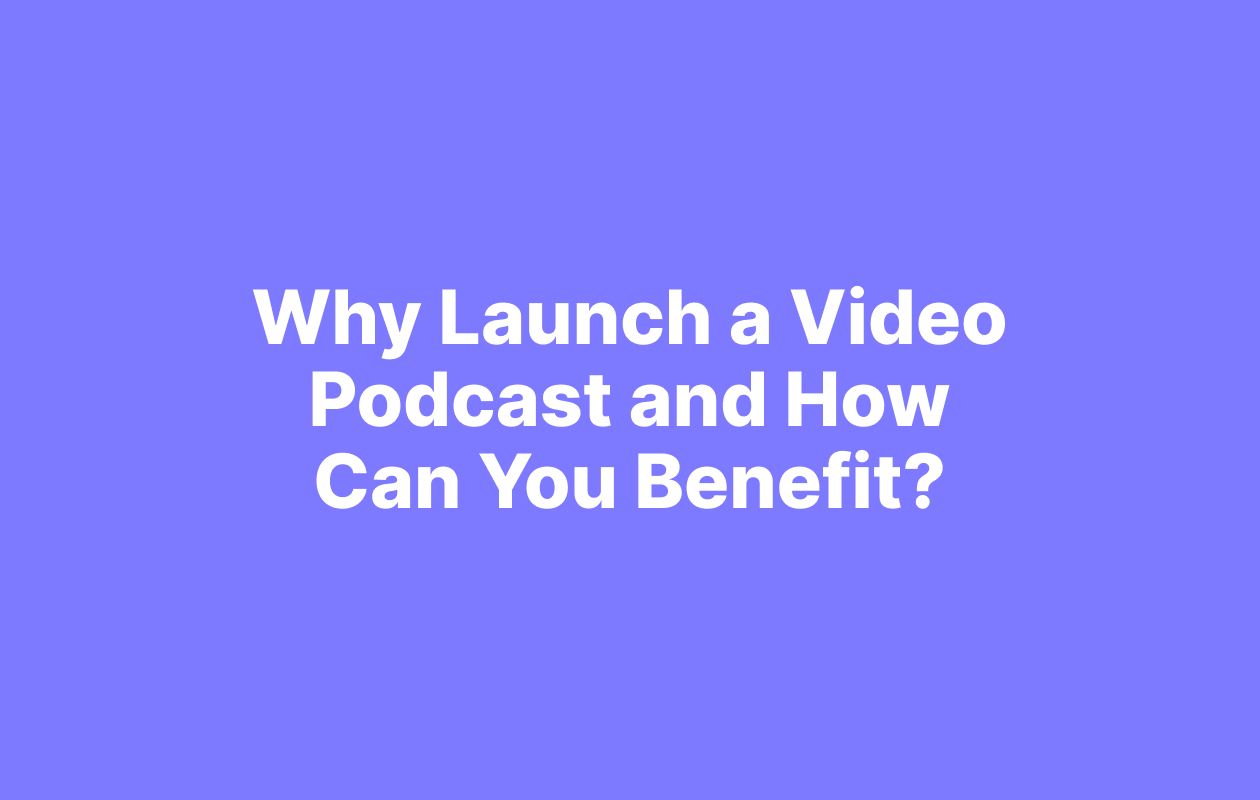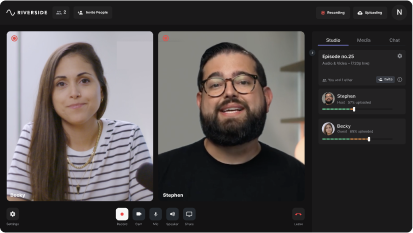Last Updated
February 16, 2023
When Will Video Podcasting Reach A Place Of Maturity?

With video podcasting’s momentous rise in popularity, Riverside’s Annual Report dives deeper into this impactful medium. As the 9th of an 11-part series, this article discusses how long it will take for video podcasting to mature.
What’s in it for me?
By the end of this section, you’ll have key insights on the following points:
- Built-in faults and issues of video podcasting
- How these faults can be overcome with time
- Predicting the point of maturity for video podcasting
What does maturity mean for video podcasts?
Video podcasts already have clear traction. Of podcast newcomers, 31% prefer playing episodes as videos in the background and 33% prefer actively watching video podcasts. But traction does not equate to platform maturity.

A mature technology is a technology that has been in use for long enough that most of its initial faults and inherent problems have been removed or reduced by further development.
There’s an argument to make that video podcasting has reached some level of maturity strictly due to its age (first started in 2003). However, there are still clear hurdles for video to clear in the world of podcasting before it can truly be considered mature.
In this section, we’ll explore the inherent faults of video podcasting and how they can be overcome.
Are there inherent problems or faults with video?
No platform is perfect. Video podcasts have grown rapidly in both consumption and creation over the past few years, but there are inherent issues with the medium. Discussing the flip-side of video podcasting to explore both sides is worthwhile.
15% of surveyed podcasters reported that they still do not record video as part of their podcasting process. But why would that be the case? What are the key issues holding podcasters back from going all in on video?
Video requires more from the consumer
Think back to your podcast consumption in 2018. Your audio-only shows allowed you to truly multitask. You could put education right into your ears and go in with your life, all at the same time. You’d feel free to take your podcast on a walk, work with it on in the background, or play it during a road trip.
While you could technically do this with a video podcast as well, the temptation is higher to engage more fully in the content. This is great for creators and consumers alike in regards to information retention, but it doesn’t help much with multi-tasking.
The visual component lends itself more to requiring full attention from consumers, and there will be many who are not willing to port all of their podcast consumption over to video for this reason.
Video requires more from the host
Brands and hosts that decide to add a visual component to their podcast need to improve in several different skill set areas.
In the planning process, brands now need to consider each episode's visual side. Does the content work for audio-only and video? Are we alienating any consumers by medium? Do we need unique footage from another effort to place in this episode?
In creation, brands need to record video on top of what they were already doing. Are we recording in high quality? Is the production set up correctly? Will this reflect well on our brand visually? Thankfully, this is easier than ever to do.
In monetization, brands must juggle traditional podcast ads, YouTube ads, sponsorships, partnerships, and more — all simultaneously.
Video causes a hike in costs
Perhaps the most obvious reasoning against video podcasting is the added cost required to create. Shows that want to add video will need to look at:
- Cameras
- Lighting
- Travel
- Other equipment
- In-person arrangements
Additionally, video adds more risk to each episode. Over 57% of brands have reported that they are willing to discard video footage or entire pieces of content if the quality is not high enough.
Starting an audio-only podcast starts off with certain costs, and most podcasting platforms are not comprehensive enough to allow brands to add video in with ease at no additional cost.
Video causes a hike in production time
On the flip side, brands and creators expect to see an uptick in the required effort to make video a part of their podcast.
In fact, 43% of companies surveyed said that the added effort of editing was the main reason video podcasting isn’t bigger already.
But editing isn’t the only additional requirement for brands. They can expect to need help with:
- A-roll
- B-roll
- Animations
- Brand design
- Video templates
- And more
Audio-first fans love the original medium
Many podcast consumers are tried and true audio-only fans. They do not feel compelled to change their listening habits just because the medium of video podcasting is growing rapidly.
There will likely always be a substantial crowd of audiophiles who truly prefer audio-only. For this reason, video podcasting will need to adapt to make even their video episodes more audio-first than ever.
How can video podcasting overcome its faults?
We’ve uncovered the inherent problems of video podcasting and what’s holding it back from being an even bigger medium. Now let’s provide solutions that will be required for it to take the next leap.
Make it audio-first video
Dan Sanchez, an expert podcaster at Sweet Fish Media, says that “for video podcasts to succeed, they need to be created audio-first.”
That may seem counter intuitive, but it accomplishes a few goals:
- It allows for audio-only fans to continue listening the way they want, even if their show begins focusing more on video
- It allows for multitasking, even in a visual medium
- It ensures that no audience members are alienated and continues building loyalty
You don’t want your show to change everything overnight. You want your current audience to continue being a fan. Likewise, you want the opportunity to expand into new audiences that video can bring in.
Win audio fans over by offering more connection
One of the key reasons people love podcasts to begin with is the closeness and connection they feel with hosts.
Video should never take away from that experience, but rather enhance it. Videos should show the host’s face and body language, as well as the guest’s.
Podcasts often need to rely on emotion more than any other content platform. Video podcasts should lean into this.
Add easter eggs in videos, but don’t change the format
Even with an audio-first format, there is an opportunity to give your video audience hidden gems to look out for.
These could be:
- Subtle visual cues
- Visual inside jokes
- Screen share content
This type of content can help extend the connection your audience feels with the host and the podcast in general.
Build up a library of video podcast playbooks
For video podcasting to reach maturity, successful brands need to share their playbooks. Companies and creators alike will crack the code of growth for video shows, and that information needs to be shared with others.
Only when people see that they can use a similarly simple process will the perception of higher required input be overcome.
As more video podcasts grow, more new ones will be started. This will help build a flourishing ecosystem of shows that grow the medium as a whole.
New software needs to solve more problems
This is especially true for ideation, recording, editing, and growth. Riverside is a great choice for recording video and audio all at once with ease. There are, however, gaps in other areas that need to be filled.
Brands will need a more streamlined way to edit video and audio together. They’ll need a better way to distribute episodes in different formats with lightning speed. And they’ll need reliable software for managing video podcast growth and monetization.
Solutions for these things exist generally, but more targeted software for video podcasts will help many brands take the leap.
When will video podcasting reach maturity?
There are existing software solutions to make creating, editing, and growth easier — but it isn’t where it needs to be yet.
There are still key blockers in terms of added cost and time requirements causing many brands to steer away from video podcasting.
And there are very few success stories and playbooks yet on brands making video podcasting work.
Once these areas coalesce, video podcasting will enter maturity and become the norm for the majority of creators. It seems highly possible that this will take place in 5 years or less.
Read more from the 2023 Riverside Annual Report series:
- Why has video podcasting become increasingly popular
- What are the major benefits of a video-first podcast compared to a standard show
- How video podcasting has changed in the past several years
- How different audiences are responding to video podcasts
- Who benefits the most from a rise in video podcasting
- How companies are recording video podcasts
- How companies are growing their video podcast’s audience
- How companies are monetizing video podcasts















.png)

.jpg)
 (1).webp)
.webp)
.webp)








